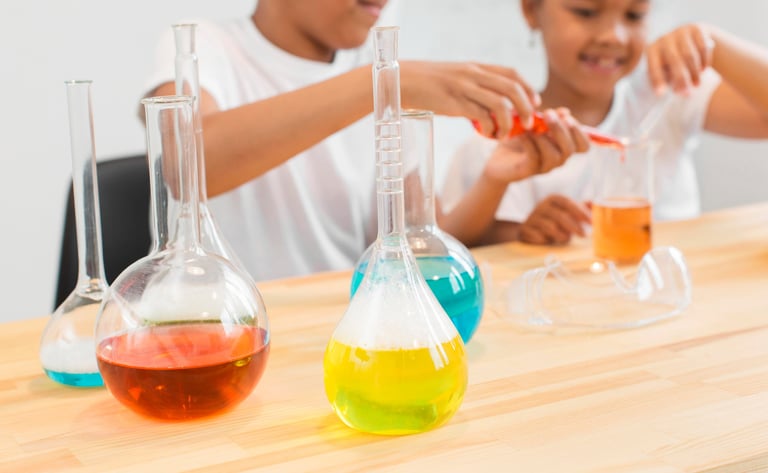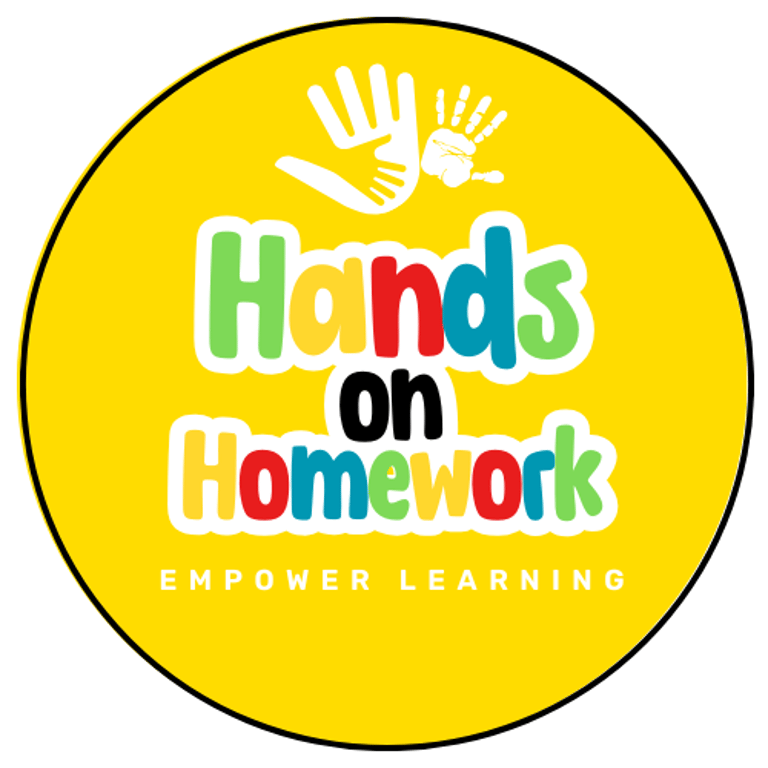Foundations of Science
Why Learn Science?
FOUNDATIONAL SKILLS
12/15/20244 min read


Why is the Sky Blue?
Does your child ask endless questions about everything and anything? As annoying as it may be they are actually honing important science skills!
Science in the early elementary years is about helping young children develop curiosity, observation skills, and a basic understanding of how the world around them works.
At this stage, the focus is on building a strong foundation for inquiry, exploration, and critical thinking, which will support more complex scientific learning later on. Here are the key foundational skills and concepts for developing a deeper understanding of the world they live in:
1. Curiosity and Inquiry
At its core, science is about asking questions and seeking answers. Early learners should be encouraged to be curious about their environment and explore how things work. They can be encouraged to this by:
Asking questions: Children should feel comfortable asking questions like “Why does the moon change shapes?” or “How do plants grow?”
Exploration: Providing opportunities for hands-on exploration, such as examining nature, testing simple experiments, or observing everyday phenomena.
Problem-solving: Encouraging kids to think critically about problems and experiment with different solutions (e.g., "How can we make this plant grow better?").
2. Observation Skills
Observing is a key skill in science that lays the groundwork for more formal scientific investigations later. Early learners can be taught to carefully observe their surroundings, using all their senses when appropriate. Skills include:
Noticing details: Encouraging children to observe objects and events closely, whether it's a growing plant, a changing cloud pattern, or a melting ice cube.
Recording observations: Drawing pictures, making lists, or dictating their thoughts help young children document what they observe.
Comparing and contrasting: Identifying similarities and differences in objects or patterns, such as comparing the sizes of different animals or the colors of leaves in different seasons.
3. Exploration
Hands-on, learning is critical in early science education. Children develop an understanding of scientific concepts by engaging with them directly, rather than simply learning facts. Activities include:
Simple experiments: Basic experiments, like testing which material makes the best umbrella or seeing how water moves through different soils, engage children in the scientific method.
Manipulatives: Using objects like blocks, magnets, or sand to explore physical properties (e.g., weight, texture, magnetism).
Outdoor exploration: Observing plants, animals, insects, or weather patterns helps children connect with the natural world and understand living systems.
4. Sorting and Classifying
Sorting and classifying are fundamental skills that introduce children to the idea of grouping things based on similar characteristics. These skills help children build early reasoning abilities, such as:
Grouping by color, shape, or size: Simple classification tasks, such as sorting leaves by color or rocks by size, lay the foundation for categorization in science.
Identifying patterns: Sorting objects by different attributes helps children identify patterns (e.g., sorting animals by habitat, color, or number of legs).
Understanding categories: As children grow, they can begin to categorize living things, matter (solid, liquid, gas), or simple machines.
5. Understanding Basic Scientific Concepts
In early elementary, children are introduced to foundational science concepts in a way that connects to their everyday experiences. These concepts include:
The five senses: Learning about sight, hearing, taste, touch, and smell and how they help us understand the world.
Matter: Understanding that everything is made of matter and exploring properties like solids, liquids, and gases through observation and simple experiments.
Simple forces: Introducing basic concepts of force, motion, and gravity by experimenting with pushing, pulling, or observing objects falling.
Living and non-living things: Recognizing the differences between living organisms and inanimate objects. Children learn to classify things as living or non-living based on basic criteria like growth, movement, or reproduction.
Basic life cycles: Observing and understanding simple life cycles of animals (e.g., caterpillars to butterflies) and plants (e.g., seeds to flowers).
6. Cause and Effect
Understanding cause and effect is a key scientific principle that helps children connect their actions with outcomes. In early science, this involves:
Experimenting with cause and effect: Allowing children to experiment and observe how their actions (like adding heat, mixing ingredients, or moving objects) cause things to change.
Recognizing simple cause and effect relationships: For example, understanding that pushing a ball makes it roll or that plants need sunlight to grow.
Predicting outcomes: Encouraging kids to make predictions and test them (e.g., “What do you think will happen if we put the ice in the sun?”).
7. Basic Measurement Skills
Understanding measurement helps children quantify and compare objects or phenomena. Early measurement skills include:
Length, weight, and volume: Using simple tools (like rulers, scales, or measuring cups) to compare sizes, weights, and volumes.
Time: Learning basic concepts of time (day, night, seasons) and observing patterns like the changes in the sky.
Temperature: Understanding the concepts of hot and cold and observing temperature changes in everyday life (e.g., feeling the warmth of the sun vs. the coolness of a shaded area).
8. Developing an Appreciation for Nature
An important goal of early science education is helping children develop an appreciation for the natural world and the environment. Activities include:
Nature walks: Observing trees, animals, and insects in their natural habitats.
Seasonal changes: Watching the changes in weather, plants, and animals across seasons.
Caring for the environment: Learning about conservation, recycling, and how we can protect the planet.
9. Collaborative Learning
Science is often a collective activity. Working together helps children build social and cognitive skills, while also learning from each other. Early collaborative activities include:
Group projects: Working together to plant a garden, build a simple machine, or track weather patterns.
Sharing resources: Using shared materials like books, observation tools, or science kits to investigate together.
Discussing results: Talking through discoveries with classmates, sharing ideas, and learning how others approach problems.
10. Communication of Ideas
Being able to share observations, ideas, and conclusions is an important aspect of science. Children develop communication skills by:
Speaking and listening: Discussing observations, predictions, and outcomes with peers or adults.
Drawing and writing: Creating simple diagrams, drawings, or written explanations of experiments or discoveries.
Sharing findings: Presenting results from simple experiments or investigations, such as “This is how the plant grew when I gave it more sunlight.
So next time your child pops an all-important question, you can take pride in your budding scientist!
